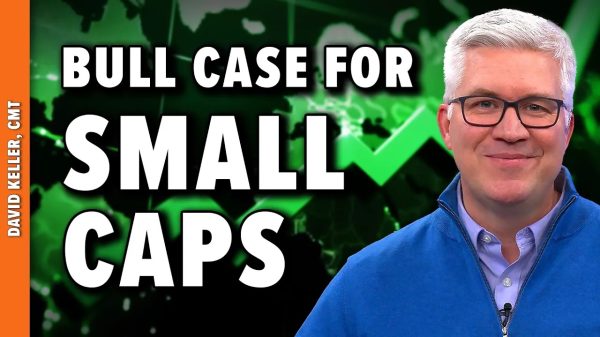Mises Wire contributor Kevin Van Elswyk, in his November 29 article “Student Loans: The Continuing Crisis That Is Getting Worse,” nicely summarizes the current confusion and scandal of federal student loan programs, which at this point appear a miasma that will likely turn into an outright student grant program as more and more of these loan balances are forgiven.
It is most unfortunate that the US government, with good intentions to increase college attendance, ever became mired in this student loan morass. The effort originally began in the 1960s when economists observed that college graduates typically earn higher lifetime incomes than those who ended their formal education with high school. Thus Congress included in the Higher Education Act of 1965 a federal policy to encourage as many Americans as possible to attend college and created several need-based programs with this mind.
As Milton Friedman told us, “If you want more of something, subsidize it; if you want less of it, tax it.” In this case, the “it” is college attendance, and the “subsidy” takes the form of student financial aid, particularly federal student loans. The Higher Education Act gave us Pell grants (originally called Basic Educational Opportunity Grants), the Guaranteed Student Loan program, and several other accompanying forms of assistance. College financial aid offices were left to “package” this assistance when they made offers of admission to applicants.
Guaranteed Student Loans were private bank loans, not federal government loans. Students applied directly to banks for these loans, which the federal government guaranteed against default, and paid the interest while students were enrolled full-time in college degree programs. Defaults and repayment were considered manageable, and most of these loans have now been repaid.
But the ground rules changed dramatically when legislative decisions were made in the final moments of passing the Affordable Care Act (known as Obamacare) in 2010. In order to make the healthcare insurance provisions of that legislation pay for themselves, as required by congressional rules, the final Affordable Care Act bill included a new federal student loan program in which the US Department of Education became the lender. That program was in theory designed to make enough profit on direct federal student lending to pay for subsidized Obamacare health insurance premiums.
Fast-forwarding to more recent years, it became apparent that not only was the federal student loan program not making a profit as anticipated but was, in fact, becoming an albatross around the government’s neck as marginal returns on investment in college degrees didn’t automatically produce more favorable earnings for college graduates after all, and borrowers were struggling to make their required monthly loan payments. We began hearing stories of women’s studies graduates taking jobs as Starbucks baristas. Many sympathetic Americans began saying these loan repayment burdens were unfair to younger generations, preventing them from buying houses and starting families.
Meanwhile, higher education tuition levels began increasing dramatically some years ago. An example from my own alma mater, an elite, private eastern women’s college (now coed for over fifty years), makes the point. Tuition and room and board during my senior year in 1963–64 was $2,800. Using the US Labor Department’s consumer price index inflation calculator, it is easy to calculate that $2,800 in 1964 is equivalent to $28,061.20 in 2023 dollars.
Thus, the consumer price index tells us that the general price level has increased by a factor of ten over those sixty years. But here is the shocking part of the story: the current tuition and room and board at my alma mater for the academic year 2023–24 is $85,220, about three times the factor of ten if those college costs had increased only at the rate of the general economy-wide consumer price index. This trend is typical among Ivy League and other elite institutions, as well as other less competitive institutions. Similar trends are evident among public institutions, though in some cases the tuition increases may result from reduced state budget allocations to public institutions.
Thus, Americans are justified in complaining about the higher cost of attending college today, costs that have far outstripped prices elsewhere in the economy. The American Council of Trustees and Alumni have shown that much of the increased tuition revenue has paid for administrative bloat such as expanded diversity, equity, and inclusion staff rather than educational efforts such as hiring more faculty or buying more library books.
There is a direct relationship between student financial aid—particularly student loans—and rising tuition. Simple microeconomic supply and demand analysis reveals that when demand functions increase (shift rightward on a standard diagram) without a commensurate increase in supply, the market-clearing price will inevitably rise. And this is exactly what has happened in American higher education.
It has become clear in recent years that the existence of federal student loans has given colleges and universities an open invitation to increase tuition. Institutional financial aid offices can simply include more loan financing in the aid packages offered to students. And it is becoming a concern that many students (and quite possibly their parents as well) do not realize the borrower responsibilities they are taking on when agreeing to the financial aid packages offered by their desired colleges. In their enthusiasm to attend their favored institutions, students may tend to ignore their future obligations. Amidst their excitement about offers of admission and financial aid, they may fail to appreciate how borrower obligations could cloud their futures.
Identifying the federal student loan problem is easier than proposing an appropriate solution. It is clearly not acceptable to forgive outstanding loan balances, forcing all taxpayers—including those who did not attend college at all, or who attended college without the benefit of loan financing, or who attended college on loans and have now repaid them—to bear the cost. In the meantime, students continue to sign up for these loan subsidies, and the costs only accumulate into the future. The federal program must be ended soon, or at a minimum be drastically reformed. As Elswyk concludes in his article, “This system cannot continue as a loan program. It will not end well.”























